|
시장보고서
상품코드
1702145
산업용 배터리 시장 보고서 : 구동 유형, 기술, 용도, 지역별(2025-2033년)Industrial Batteries Market Report by Drive Type (Electric, Hydraulic, and Others), Technology (Lithium-Ion Battery, Lead-Acid Battery, and Others), Application (Forklift, Telecom, UPS, and Others), and Region 2025-2033 |
||||||
산업용 배터리 세계 시장 규모는 2024년 232억 달러에 달했습니다. 향후 IMARC Group은 2033년까지 시장 규모가 367억 달러에 달하고, 2025-2033년 4.98%의 연평균 성장률(CAGR)을 보일 것으로 예측하고 있습니다.
산업용 배터리는 크고 견고한 장비의 전원으로 사용되는 전기화학 장치입니다. 양극, 음극, 전해액으로 구성되며, 진동과 극한의 온도에 대한 내성을 가지고 있습니다. 리튬 이온 배터리, 니켈계 배터리, 리튬 티타네이트 배터리, 산화마그네슘 리튬 배터리, 납계 배터리 등이 일반적으로 사용되고 있습니다. 의료기기, 무정전 전원 장치(UPS), 안전 경보, 추적 시스템, 자동차 액세서리 등에 널리 사용되고 있습니다. 산업용 배터리는 기존 소비자용 배터리에 비해 작동 수명이 길고, 열악한 환경이나 원격지에서도 사용할 수 있습니다. 그 결과, 산업용 배터리는 에너지, 그리드 스토리지, 유틸리티, 통신 시스템에서 널리 사용되고 있습니다.
산업용 배터리 시장 동향
급속한 산업화와 세계 공장 자동화에 대한 요구가 증가하는 것은 시장 성장을 가속하는 주요 요인 중 하나입니다. 지속적이고 신뢰할 수 있는 에너지원에 대한 요구가 증가함에 따라 대형 장비의 전원으로 산업용 배터리가 광범위하게 채택되고 있습니다. 또한, 산업 전반에 걸쳐 리튬 이온(Li-ion) 배터리의 사용이 증가하고 있는 것도 시장 성장을 가속하고 있습니다. 리튬 이온 배터리는 모니터링 및 경보 시스템, 산업용 전자기기, 태양광 백업 저장 시스템 등에 널리 사용되고 있습니다. 또한, 탄소 발자국 감소를 돕고 친환경 녹색 산업용 배터리 출시 등 다양한 제품 혁신이 시장 성장에 박차를 가하고 있습니다. 이에 따라 병원 및 헬스케어 센터의 건강 모니터링 시스템, 중요 의료기기, 전동 청소 도구에 대한 제품 사용이 증가하면서 시장 성장에 긍정적인 영향을 미치고 있습니다. 기타 전기자동차(EV) 수요 증가, 제조업에서의 제품 채택 확대 등이 시장 성장을 견인할 것으로 예측됩니다.
본 보고서에서 다룬 주요 질문
- 2024년 세계 산업용 배터리 시장 규모는?
- 2025-2033년 산업용 배터리 시장 세계 시장 성장률 전망은?
- 세계 산업용 배터리 시장을 이끄는 주요 요인은?
- 코로나19가 세계 산업용 배터리 시장에 미치는 영향은?
- 세계 산업용 배터리 시장의 기술별 시장 현황은?
- 세계 산업용 배터리 시장의 주요 지역은?
- 세계 산업용 배터리 시장의 주요 기업은?
목차
제1장 서문
제2장 조사 범위와 조사 방법
- 조사 목적
- 이해관계자
- 데이터 소스
- 1차 정보
- 2차 정보
- 시장 추정
- 보텀업 접근
- 톱다운 접근
- 조사 방법
제3장 주요 요약
제4장 서론
- 개요
- 주요 업계 동향
제5장 세계의 산업용 배터리 시장
- 시장 개요
- 시장 실적
- COVID-19의 영향
- 시장 예측
제6장 시장 분석 : 구동 유형별
- 전기
- 유압
- 기타
제7장 시장 분석 : 기술별
- 리튬 이온 배터리
- 납축 배터리
- 기타
제8장 시장 분석 : 용도별
- 지게차
- 통신
- UPS
- 기타
제9장 시장 분석 : 지역별
- 북미
- 미국
- 캐나다
- 아시아태평양
- 중국
- 일본
- 인도
- 한국
- 호주
- 인도네시아
- 기타
- 유럽
- 독일
- 프랑스
- 영국
- 이탈리아
- 스페인
- 러시아
- 기타
- 라틴아메리카
- 브라질
- 멕시코
- 기타
- 중동 및 아프리카
- 시장 내역 : 국가별
제10장 SWOT 분석
- 개요
- 강점
- 약점
- 기회
- 위협
제11장 밸류체인 분석
제12장 Porter의 Five Forces 분석
- 개요
- 바이어의 교섭력
- 공급 기업의 교섭력
- 경쟁 정도
- 신규 진출업체의 위협
- 대체품의 위협
제13장 가격 분석
제14장 경쟁 구도
- 시장 구조
- 주요 기업
- 주요 기업 개요
- Accumulatorenwerke HOPPECKE Carl Zoellner & Sohn GmbH
- Amara Raja Group
- American Battery Solutions
- Bulldog Battery Corporation
- C&D Technologies Inc.
- EnerSys
- Exide Industries Limited
- GS Yuasa Corporation
- Industrial Battery & Services Inc.
- Johnson Controls International
- Panasonic Corporation
- Saft(TotalEnergies SE)
The global industrial batteries market size reached USD 23.2 Billion in 2024. Looking forward, IMARC Group expects the market to reach USD 36.7 Billion by 2033, exhibiting a growth rate (CAGR) of 4.98% during 2025-2033.
Industrial batteries are electrochemical devices used as a power source for large, rugged equipment. They consist of cathodes, anodes and electrolyte solutions and offer resistance to vibrations and extreme temperatures. Lithium-ion, nickel-based, lithium titanate, lithium magnesium oxide and lead-based batteries are some of the commonly available variants. They are widely used in medical equipment, uninterruptible power source (UPS), safety alarms, tracking systems and automobile accessories. In comparison to the traditionally used consumer batteries, industrial variants have longer operation life and can be utilized in extreme environments and remote locations. As a result, industrial batteries are extensively used in energy, grid storage, utility, and telecommunication systems.
Industrial Batteries Market Trends:
Rapid industrialization and increasing requirement for factory automation across the globe are among the key factors driving the growth of the market. The rising requirement for continuous and reliable sources of energy is leading to the widespread adoption of industrial batteries to power heavy-duty equipment. Additionally, the increasing utilization of lithium-ion (Li-ion) batteries across industries is favouring the market growth. Li-ion batteries are widely used in surveillance and alarm systems, industrial electronics, and solar power backup storage systems. Moreover, various product innovations, such as the launch of green industrial batteries that assist in reducing carbon footprint and are environmentally friendly, are providing a thrust to the market growth. In line with this, the increasing product utilization in health monitoring systems, critical care equipment and power cleaning tools in hospitals and healthcare centres is positively impacting the market growth. Other factors, including the rising demand for electric vehicles (EVs), along with the widespread product adoption in the manufacturing industry, are anticipated to drive the market toward growth.
Key Market Segmentation:
Breakup by Drive Type:
- Electric
- Hydraulic
- Others
Breakup by Technology:
- Lithium-Ion Battery
- Lead-Acid Battery
- Others
Breakup by Application:
- Forklift
- Telecom
- UPS
- Others
Breakup by Region:
- North America
- United States
- Canada
- Asia-Pacific
- China
- Japan
- India
- South Korea
- Australia
- Indonesia
- Others
- Europe
- Germany
- France
- United Kingdom
- Italy
- Spain
- Russia
- Others
- Latin America
- Brazil
- Mexico
- Others
- Middle East and Africa
Competitive Landscape:
The competitive landscape of the industry has also been examined along with the profiles of the key players being Accumulatorenwerke HOPPECKE Carl Zoellner & Sohn GmbH, Amara Raja Group, American Battery Solutions, Bulldog Battery Corporation, C&D Technologies Inc., EnerSys, Exide Industries Limited, GS Yuasa Corporation, Industrial Battery & Services Inc., Johnson Controls International, Panasonic Corporation and Saft (TotalEnergies SE).
Key Questions Answered in This Report
- 1.What was the size of the global industrial batteries market in 2024?
- 2.What is the expected growth rate of the global industrial batteries market during 2025-2033?
- 3.What are the key factors driving the global industrial batteries market?
- 4.What has been the impact of COVID-19 on the global industrial batteries market?
- 5.What is the breakup of the global industrial batteries market based on the technology?
- 6.What are the key regions in the global industrial batteries market?
- 7.Who are the key players/companies in the global industrial batteries market?
Table of Contents
1 Preface
2 Scope and Methodology
- 2.1 Objectives of the Study
- 2.2 Stakeholders
- 2.3 Data Sources
- 2.3.1 Primary Sources
- 2.3.2 Secondary Sources
- 2.4 Market Estimation
- 2.4.1 Bottom-Up Approach
- 2.4.2 Top-Down Approach
- 2.5 Forecasting Methodology
3 Executive Summary
4 Introduction
- 4.1 Overview
- 4.2 Key Industry Trends
5 Global Industrial Batteries Market
- 5.1 Market Overview
- 5.2 Market Performance
- 5.3 Impact of COVID-19
- 5.4 Market Forecast
6 Market Breakup by Drive Type
- 6.1 Electric
- 6.1.1 Market Trends
- 6.1.2 Market Forecast
- 6.2 Hydraulic
- 6.2.1 Market Trends
- 6.2.2 Market Forecast
- 6.3 Others
- 6.3.1 Market Trends
- 6.3.2 Market Forecast
7 Market Breakup by Technology
- 7.1 Lithium-Ion Battery
- 7.1.1 Market Trends
- 7.1.2 Market Forecast
- 7.2 Lead-Acid Battery
- 7.2.1 Market Trends
- 7.2.2 Market Forecast
- 7.3 Others
- 7.3.1 Market Trends
- 7.3.2 Market Forecast
8 Market Breakup by Application
- 8.1 Forklift
- 8.1.1 Market Trends
- 8.1.2 Market Forecast
- 8.2 Telecom
- 8.2.1 Market Trends
- 8.2.2 Market Forecast
- 8.3 UPS
- 8.3.1 Market Trends
- 8.3.2 Market Forecast
- 8.4 Others
- 8.4.1 Market Trends
- 8.4.2 Market Forecast
9 Market Breakup by Region
- 9.1 North America
- 9.1.1 United States
- 9.1.1.1 Market Trends
- 9.1.1.2 Market Forecast
- 9.1.2 Canada
- 9.1.2.1 Market Trends
- 9.1.2.2 Market Forecast
- 9.1.1 United States
- 9.2 Asia-Pacific
- 9.2.1 China
- 9.2.1.1 Market Trends
- 9.2.1.2 Market Forecast
- 9.2.2 Japan
- 9.2.2.1 Market Trends
- 9.2.2.2 Market Forecast
- 9.2.3 India
- 9.2.3.1 Market Trends
- 9.2.3.2 Market Forecast
- 9.2.4 South Korea
- 9.2.4.1 Market Trends
- 9.2.4.2 Market Forecast
- 9.2.5 Australia
- 9.2.5.1 Market Trends
- 9.2.5.2 Market Forecast
- 9.2.6 Indonesia
- 9.2.6.1 Market Trends
- 9.2.6.2 Market Forecast
- 9.2.7 Others
- 9.2.7.1 Market Trends
- 9.2.7.2 Market Forecast
- 9.2.1 China
- 9.3 Europe
- 9.3.1 Germany
- 9.3.1.1 Market Trends
- 9.3.1.2 Market Forecast
- 9.3.2 France
- 9.3.2.1 Market Trends
- 9.3.2.2 Market Forecast
- 9.3.3 United Kingdom
- 9.3.3.1 Market Trends
- 9.3.3.2 Market Forecast
- 9.3.4 Italy
- 9.3.4.1 Market Trends
- 9.3.4.2 Market Forecast
- 9.3.5 Spain
- 9.3.5.1 Market Trends
- 9.3.5.2 Market Forecast
- 9.3.6 Russia
- 9.3.6.1 Market Trends
- 9.3.6.2 Market Forecast
- 9.3.7 Others
- 9.3.7.1 Market Trends
- 9.3.7.2 Market Forecast
- 9.3.1 Germany
- 9.4 Latin America
- 9.4.1 Brazil
- 9.4.1.1 Market Trends
- 9.4.1.2 Market Forecast
- 9.4.2 Mexico
- 9.4.2.1 Market Trends
- 9.4.2.2 Market Forecast
- 9.4.3 Others
- 9.4.3.1 Market Trends
- 9.4.3.2 Market Forecast
- 9.4.1 Brazil
- 9.5 Middle East and Africa
- 9.5.1 Market Trends
- 9.5.2 Market Breakup by Country
- 9.5.3 Market Forecast
10 SWOT Analysis
- 10.1 Overview
- 10.2 Strengths
- 10.3 Weaknesses
- 10.4 Opportunities
- 10.5 Threats
11 Value Chain Analysis
12 Porters Five Forces Analysis
- 12.1 Overview
- 12.2 Bargaining Power of Buyers
- 12.3 Bargaining Power of Suppliers
- 12.4 Degree of Competition
- 12.5 Threat of New Entrants
- 12.6 Threat of Substitutes
13 Price Analysis
14 Competitive Landscape
- 14.1 Market Structure
- 14.2 Key Players
- 14.3 Profiles of Key Players
- 14.3.1 Accumulatorenwerke HOPPECKE Carl Zoellner & Sohn GmbH
- 14.3.1.1 Company Overview
- 14.3.1.2 Product Portfolio
- 14.3.2 Amara Raja Group
- 14.3.2.1 Company Overview
- 14.3.2.2 Product Portfolio
- 14.3.2.3 Financials
- 14.3.3 American Battery Solutions
- 14.3.3.1 Company Overview
- 14.3.3.2 Product Portfolio
- 14.3.4 Bulldog Battery Corporation
- 14.3.4.1 Company Overview
- 14.3.4.2 Product Portfolio
- 14.3.5 C&D Technologies Inc.
- 14.3.5.1 Company Overview
- 14.3.5.2 Product Portfolio
- 14.3.5.3 SWOT Analysis
- 14.3.6 EnerSys
- 14.3.6.1 Company Overview
- 14.3.6.2 Product Portfolio
- 14.3.6.3 Financials
- 14.3.6.4 SWOT Analysis
- 14.3.7 Exide Industries Limited
- 14.3.7.1 Company Overview
- 14.3.7.2 Product Portfolio
- 14.3.7.3 Financials
- 14.3.8 GS Yuasa Corporation
- 14.3.8.1 Company Overview
- 14.3.8.2 Product Portfolio
- 14.3.8.3 Financials
- 14.3.8.4 SWOT Analysis
- 14.3.9 Industrial Battery & Services Inc.
- 14.3.9.1 Company Overview
- 14.3.9.2 Product Portfolio
- 14.3.10 Johnson Controls International
- 14.3.10.1 Company Overview
- 14.3.10.2 Product Portfolio
- 14.3.10.3 Financials
- 14.3.10.4 SWOT Analysis
- 14.3.11 Panasonic Corporation
- 14.3.11.1 Company Overview
- 14.3.11.2 Product Portfolio
- 14.3.11.3 Financials
- 14.3.11.4 SWOT Analysis
- 14.3.12 Saft (TotalEnergies SE)
- 14.3.12.1 Company Overview
- 14.3.12.2 Product Portfolio
- 14.3.1 Accumulatorenwerke HOPPECKE Carl Zoellner & Sohn GmbH



















